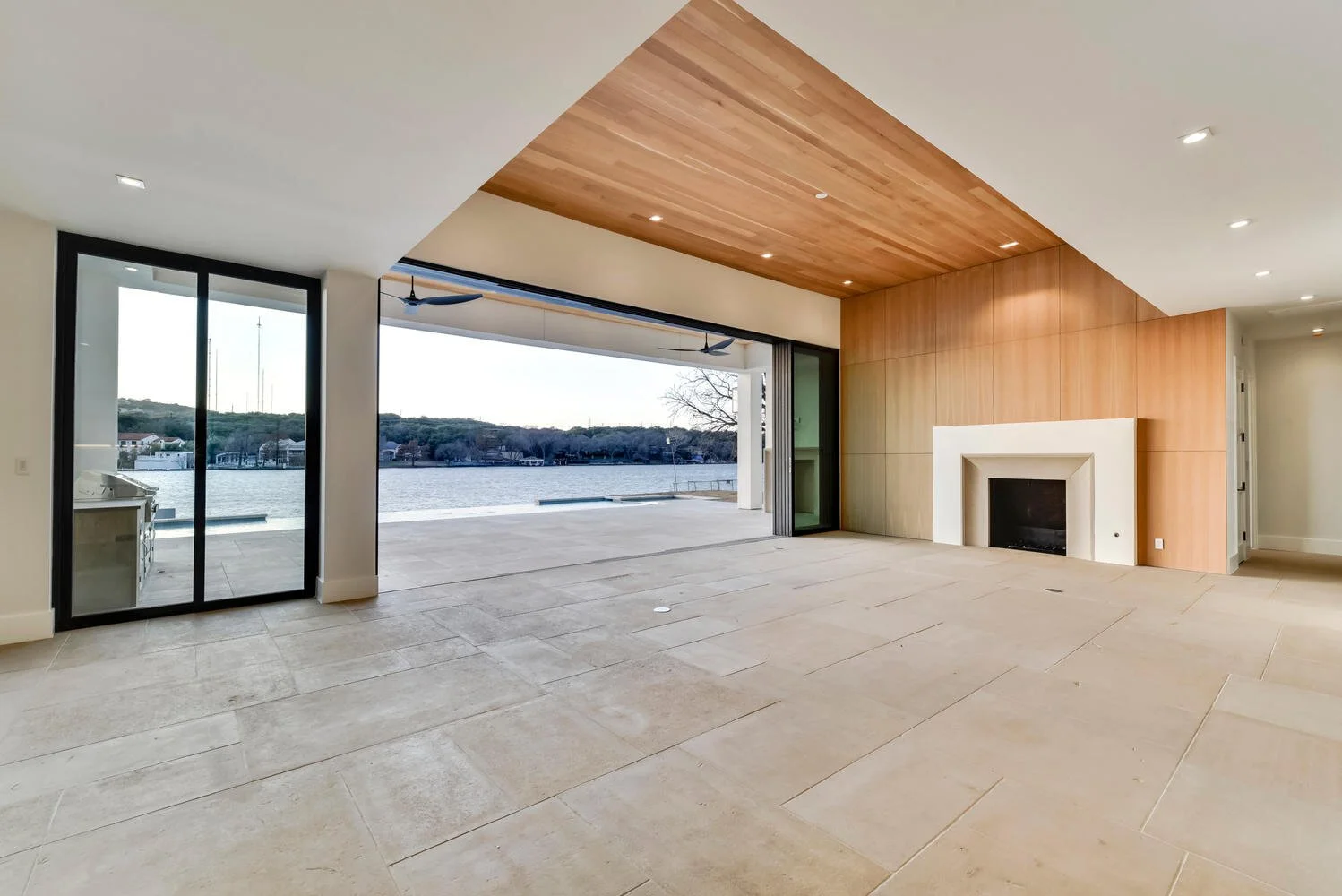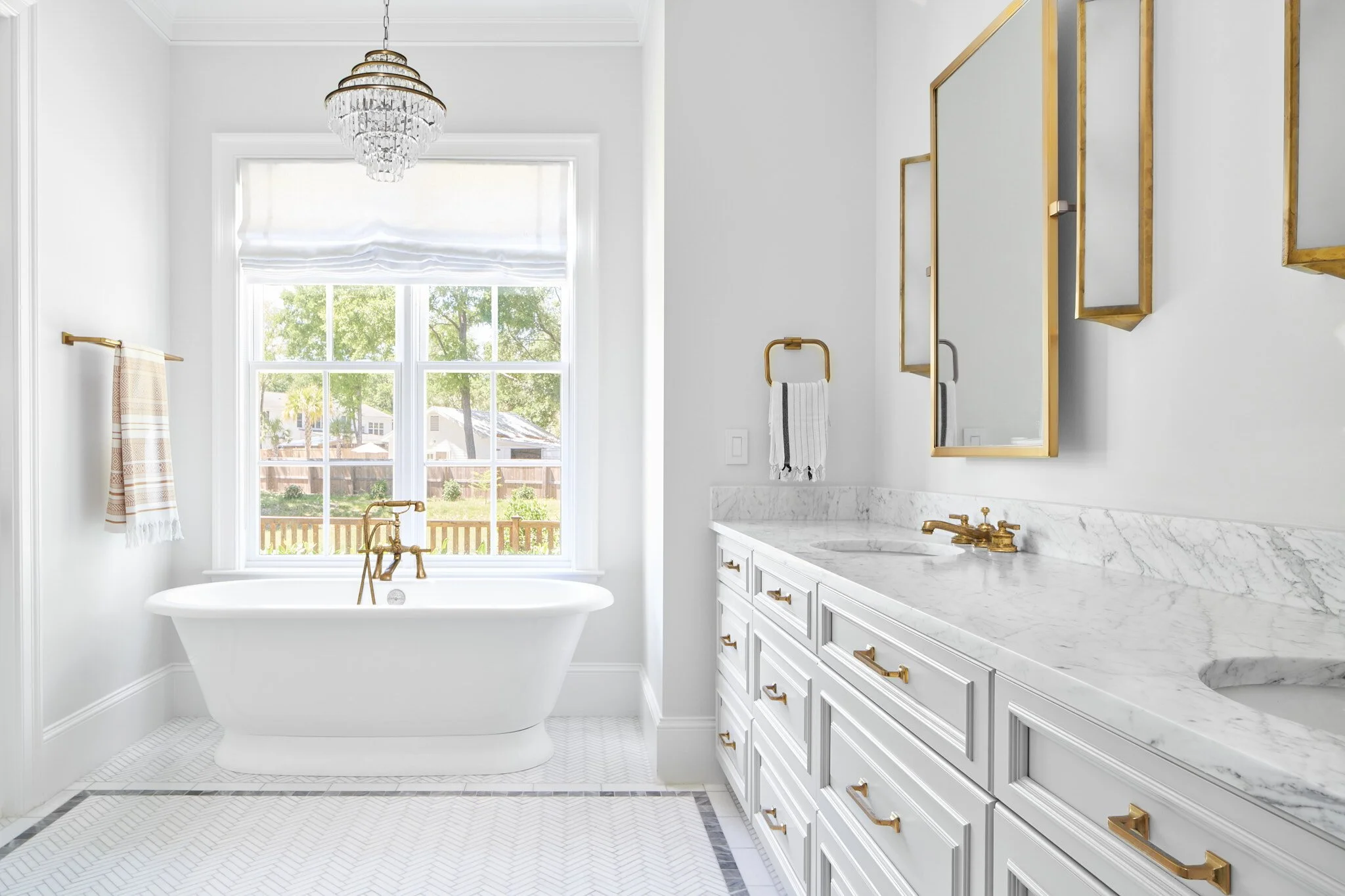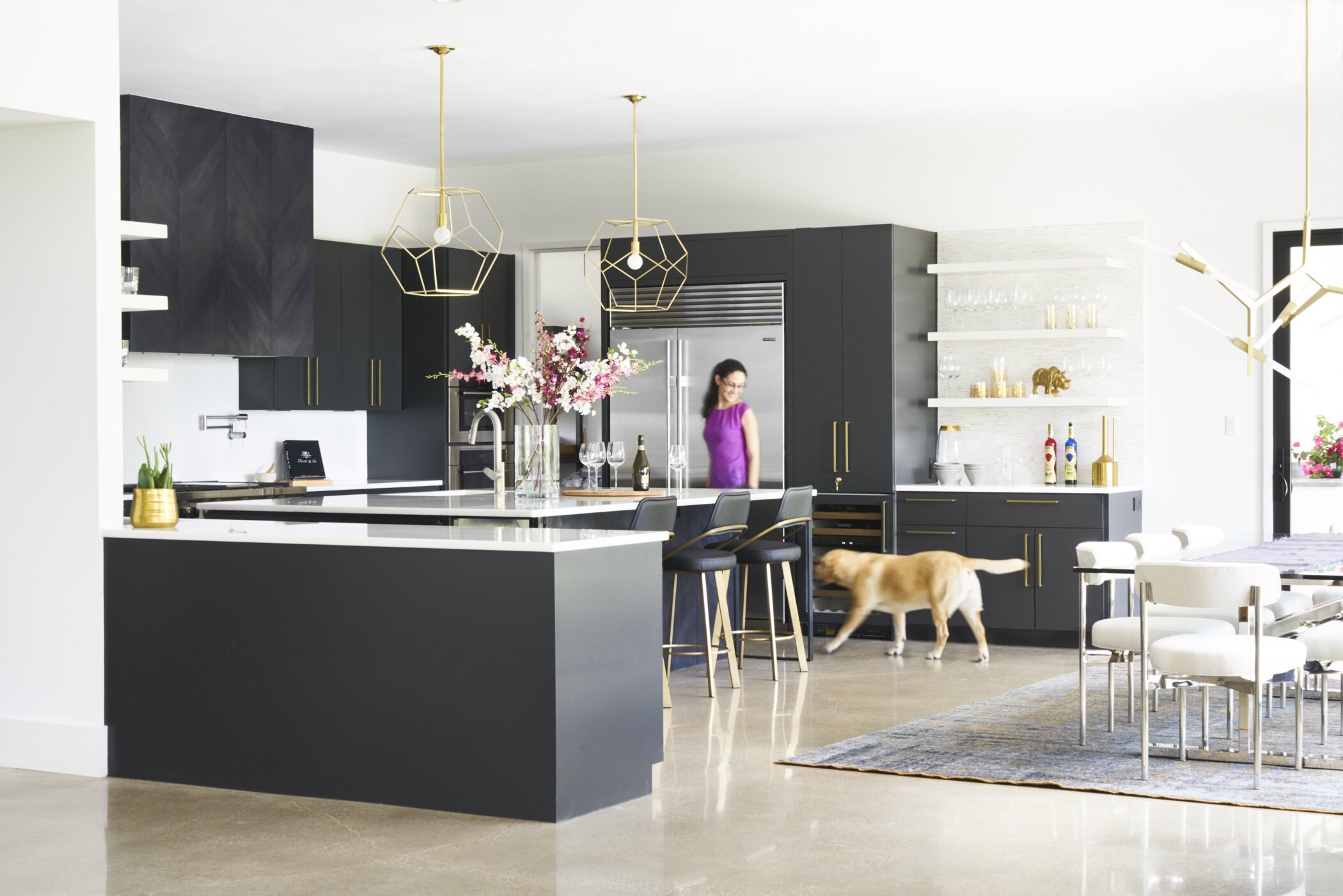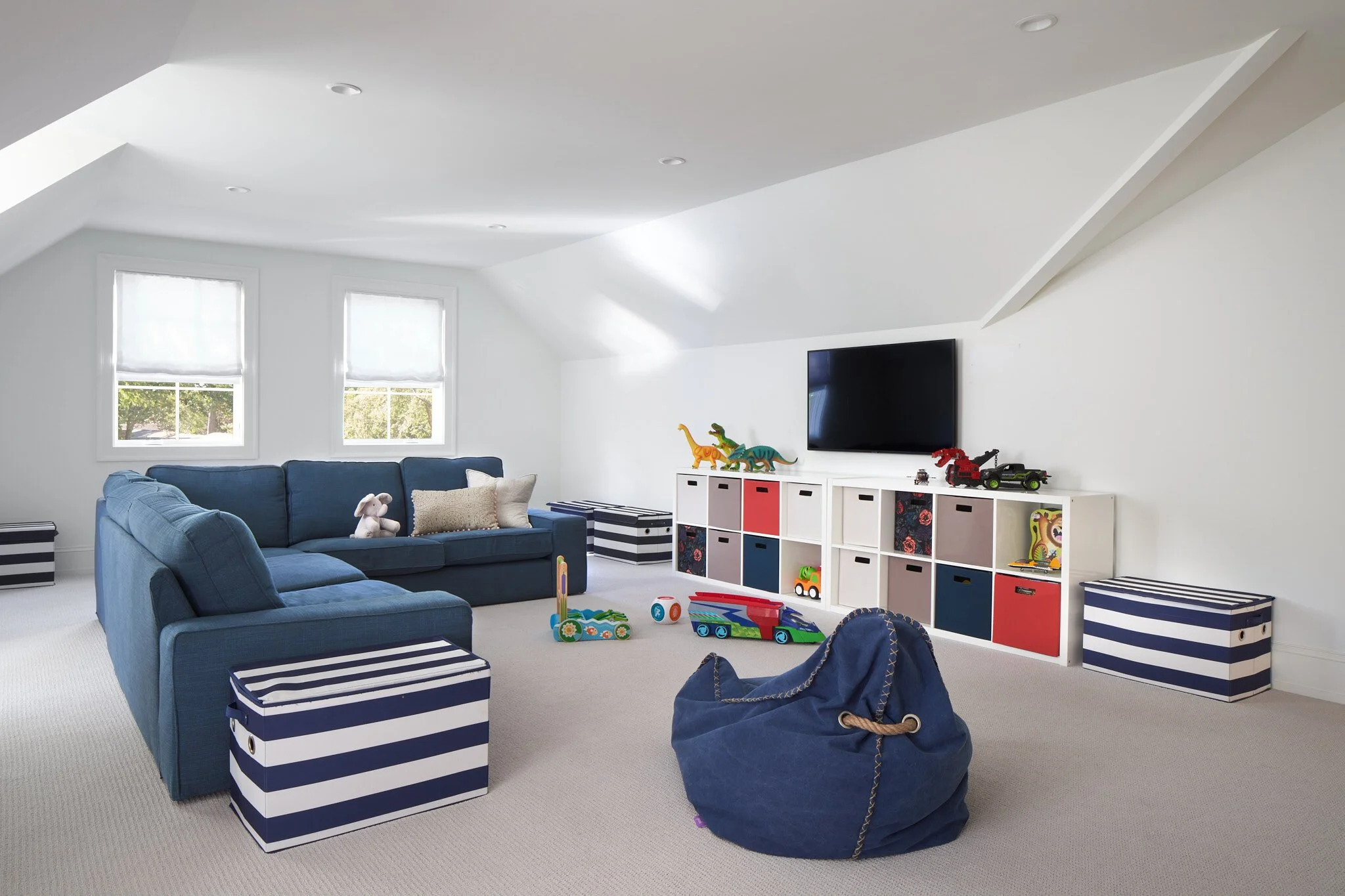What is the Best Flooring Option for Your Home?
Our Austin Architects Explain the Differences Between Hardwood, Tile, Concrete, and Carpet to Help You Choose the Right Type of Flooring
There are four main types of flooring options to choose from when building a house or constructing an addition: hardwood, tile, concrete, and carpet. These four finishes all have very different looks and feels, so how do you know what is the best flooring option for your home? Our team of architects in Austin, Texas, explains the differences between hardwood, tile, concrete, and carpet to help you choose the right one. Make sure to bookmark this page for when you head to the showroom or meet with your architecture team!
Flooring by DK Studio
Hardwood vs. Tile vs. Concrete vs. Carpet: Comparing the Top Flooring Options Used in Residential Design
Whether you are planning your first remodel or building your first house, you need to make flooring selections that will endure for years to come. To help you make the right choice, our Austin architects have compiled a list of the pros and cons of hardwood, tile, concrete, and carpet. Here are our comparisons.
Hardwood Floors
What is Hardwood?
Hardwood flooring has been a popular option for centuries. Wood flooring is manufactured from timber in a mill and ranges in plank length and width, finishes, and stains. It is used in a variety of architectural styles.
Hardwood Flooring by DK Studio
Types of Hardwood Floors
Finished - Finished hardwood comes pre-stained and sealed. It just needs to be installed.
Unfinished - Unfinished hardwood needs to be stained and sealed after installation. It allows for more customization than prefinished options.
Solid - Solid hardwood is 5/8 to 3/4 inch thick planks of wood. It can be sanded and refinished many times.
Engineered - Engineered hardwood is a wood veneer glued on a plywood-like layer. It can only be refinished once or twice, depending on the thickness of the veneer.
Hardwood Flooring Pros and Cons
Pros
Warm and beautiful
Not too hard on the feet
Adds character and charm
Cons
Expensive
Can incur scratches and water damage
Best Rooms for Hardwood Floors
Hardwood floors are suitable to use throughout the entire home, including the living room, dining room, bedroom, stairs, and foyer.
Tile Floors
What is Tile?
Tile flooring is manufactured from various materials, including natural stone, ceramic, clay, and glass. While tiles are available in many shapes, the most common options are squares and rectangles. Tile flooring is used in a variety of architectural styles.
Tile Flooring by DK Studio
Types of Tile
Ceramic - Ceramic is one of the most common types of tile. Ceramic tiles are made from fired clay and glazed in various colors and finishes.
Porcelain - Porcelain tiles are incredibly durable clay tiles fired at high temperatures. They are often made to resemble natural stone but come in a range of finishes.
Cement - Cement or encaustic tiles are popular for their vibrant colors and patterns. Since concrete is porous, these tiles need to be sealed after installation.
Natural Stone - Natural stone tiles are made from various materials, including marble, travertine, and limestone. The stone and polish used will affect appearance, durability, and maintenance.
Tile Flooring Pros and Cons
Pros
Generally durable
Water-resistant
Easy to maintain
Cons
Cold and hard on feet
Can be slippery
Need to pay attention to specs and applications
Best Rooms for Tile Floors
Tile is a suitable flooring option for the entire home, but it is especially practical in high-traffic or wet areas like kitchens, bathrooms, mudrooms, or even pet rooms.
Concrete Floors
What are Concrete Floors?
Concrete flooring is achieved through a multistep process of mechanically polishing the slab until the surface is smooth, even, and dustproof. Concrete can be made to resemble tile, stone, or even terrazzo flooring through different stains, furnishes, and cuts. It is often used in contemporary or industrial homes.
Polished Concrete by DK Studio
Concrete Flooring Options
Stains - Stains can be applied to concrete slabs to add color, including warm hues.
Finishes - Concrete finishes range from matte to a mirror-like polish.
Cuts - Concrete slabs can be cut, scored, or etched to add designs, including tile lay patterns or borders.
Aggregate Exposures - Concrete slabs are made up of aggregates, and the level of sanding and polishing will reveal different amounts. Aggregate exposures range from a sand or cream finish to a heavy aggregate finish resembling terrazzo.
Concrete Flooring Pros and Cons
Pros
Durable
Inexpensive
Low maintenance
Cons
Hard on the feet
Can affect acoustics
Tends to be cold
Susceptible to cracks and variations
Best Rooms for Concrete Floors
Concrete flooring can be used throughout the home and is excellent for high traffic or work areas like bathrooms, kitchens, garages, home gyms, and three-season rooms. Because concrete flooring uses the foundation slab, this flooring option is typically limited to ground floor levels.
Carpeted Floors
What is Carpet?
Carpet may be one of the most controversial flooring options out there. People either love it or hate it! Carpet is a textile floor covering made up of a pile layer attached to a backing. It is available in a range of weaves, organic and synthetic textiles, and colors. It is a cost-effective option that can be used in various architectural styles.
Carpet by DK Studio
Types of Carpet
Loop Pile - Loop pile carpets feature a tighter looped weave that increases durability but decreases the soft texture. Berber carpet is an example of a loop pile.
Cut Pile - Cut pile carpets feature a cut weave where loose fiber ends are cut to a uniform level, which offers a softer feel but less durability. Cut pile is the most commonly used pile on rugs and carpeting.
High Pile - High pile carpets use more textile fibers to create a dense pile, indicating higher quality.
Low Pile - Low pile carpets use fewer textile fibers, indicating lower quality. If you can push the fibers to feel or see the backing, the carpet may not be a long-lasting choice.
Carpeting Pros and Cons
Pros
Soft on the feet
Quiet
Inexpensive
Cons
Difficult to clean
Lacks durability
Best Rooms for Carpeted Floors
Carpet is not a suitable material to use in high traffic or wet areas. While it is one of the least durable flooring options, some homeowners prefer to use it in bedrooms and home offices for the soft feel on the feet and acoustic properties.
So, What is the Best Flooring Option for Your Home?
When it comes to selecting the best flooring option for your home, the decision is yours! Proper installation and routine maintenance are required to prolong the longevity of all four flooring options we discussed. So really, the choice between the hardwood, tile, concrete, and carpet comes down to aesthetics, maintenance requirements, and costs. Don’t be afraid to use a variety of flooring materials throughout your home to define different spaces and meet the needs of each room. Also, remember to honor the architectural style of your house. While most flooring options offer a range of versatile finishes, concrete flooring may not be the best selection for period renovations. If you need help with your flooring selections, our team of Austin Architects is always here to answer any questions!





